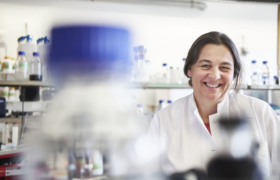NO-induced elevation of cGMP and cGMP-elevating drugs modulate platelet activity, but the molecular mechanisms and therapeutic potential of cGMP signalling in platelets are not well understood. According to the traditional view, NO-cGMP signalling limits platelet aggregation, but several recent studies indicate that cGMP may also promote specific aspects of platelet activation. We hypothesize that the functional outcome (pro- versus anti-platelet activity) of cGMP signals depends on their spatiotemporal profile, i.e. it depends on when and where platelet cGMP is elevated during hemostasis and thrombosis. To test this hypothesis in vivo, we will use novel transgenic reporter mice for intravital monitoring of cGMP signals in platelets and for noninvasive platelet tracking. These tools allow for correlative visualization of cGMP signals and platelet behavior in vivo in mice under (patho-)physiological conditions. In contrast to many previous studies, our approach also considers the potential impact of blood flow on cGMP signalling. Indeed, we have discovered that NO-induced cGMP signals in platelets are highly flow/shear-dependent indicating an important role of cGMP in platelet mechanotransduction. The central aim of this project is to identify the molecular mechanism behind mechanosensitive cGMP signalling in platelets and its functional relevance for hemostasis and thrombosis. We hypothesize that it acts as an auto-regulatory break to limit thrombosis under high shear (see Figure). Unlike existing anti-thrombotic therapies, drugs that activate the shear-dependent cGMP brake should not increase the risk of bleeding.





